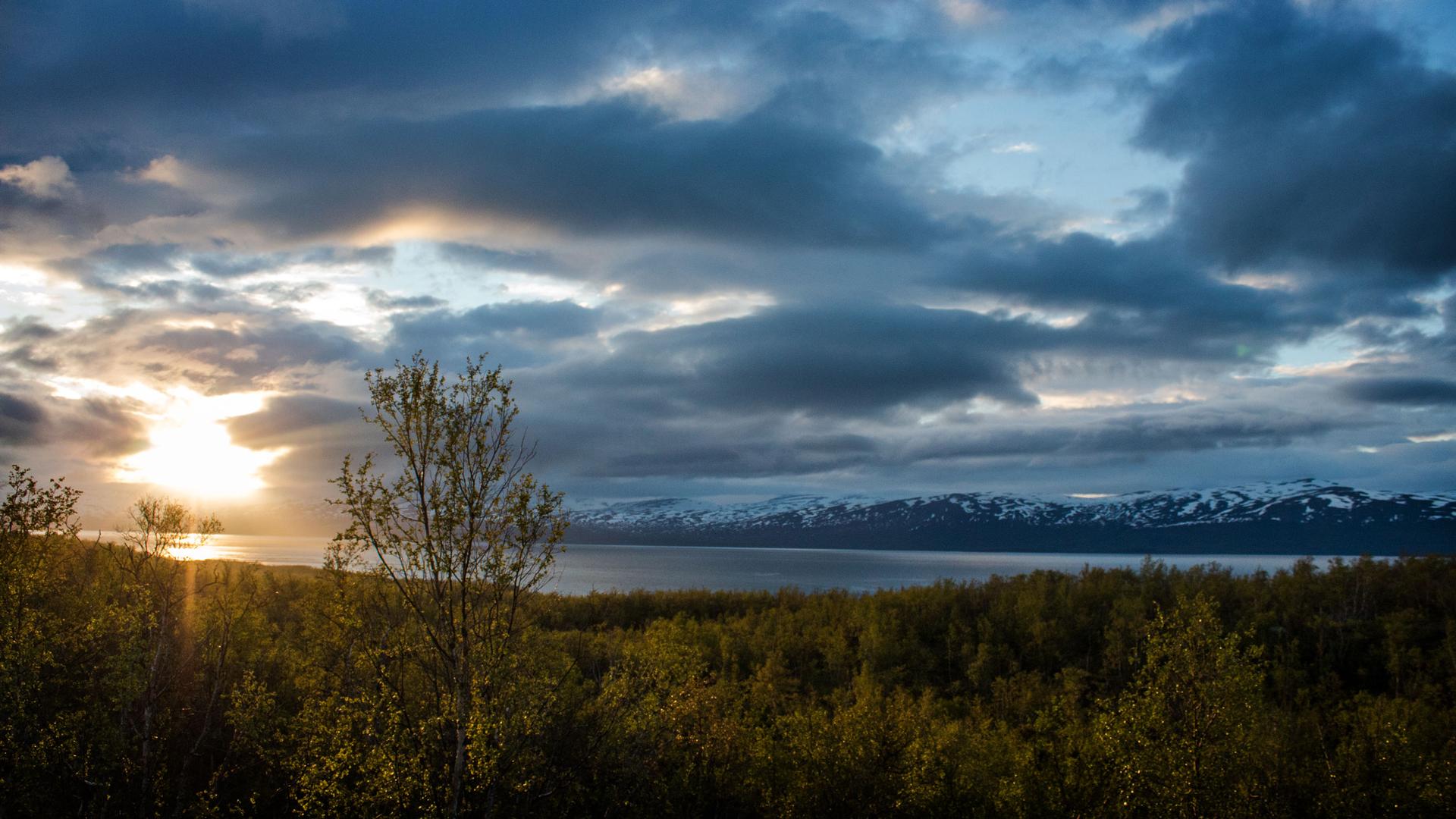Arctic permafrost is starting to thaw. Here’s why we should all care.
The sun sets over the water near Abisko, Sweden.
This story comes to us through a partnership with the podcast and radio program Threshold, with funding support from the Pulitzer Center.
On a lovely summer day in northern Sweden, Mathilda Nyzell is rowing a boat across a lake, as flocks of birds circle in the sky.
“We have so much fun in the boat when me and Jenny go out,” Nyzell says.
Nyzell and her colleague Jenny Gåling are master’s students at Stockholm University. They’re here in Abisko, Sweden, to study Arctic permafrost — soil that’s been frozen year-round for at least two years — and the gases that seep out into the atmosphere when it thaws. Specifically, they’re measuring the gas bubbling up from sediment in lakes like this one, which dots the landscape here.
Related: In Iceland, a shifting sculpture for a changing Arctic
These scientists love the research process and the places it takes them — places like this lake. But the data they’re collecting tell a very sobering story.
One of the main gases bubbling up and out of this lake is methane, a powerful greenhouse gas. As our human-caused carbon pollution causes the planet to heat up, that warming is thawing out Arctic permafrost, which, in turn, is triggering an increase in natural carbon emissions from places like this.
In other words, all around the Arctic, climate change caused by human pollution is causing even more of the same greenhouse gases to move from once-frozen soil into the atmosphere.
For researchers around the world, that is a very frightening change, because there is a lot of carbon in that soil.
“The amount of the amount of carbon that’s stored in [Arctic permafrost soil], it’s twice the amount that we have in the atmosphere,” says Joachim Jansen, lead researcher on this project and a doctoral student at Stockholm University. “And so if that will all be released into the atmosphere, that would mean a huge climatic change.”
Related: An Alaskan village is falling into the sea. Washington is looking the other way.
This is a statistic worth remembering, so let’s put it another way: If all the carbon currently in the atmosphere could fit into one bucket, all of the carbon currently frozen in Arctic permafrost would fill two buckets of the same size.
Nobody knows how much of that carbon will actually end up in the atmosphere or how quickly. That’s why these researchers are here.
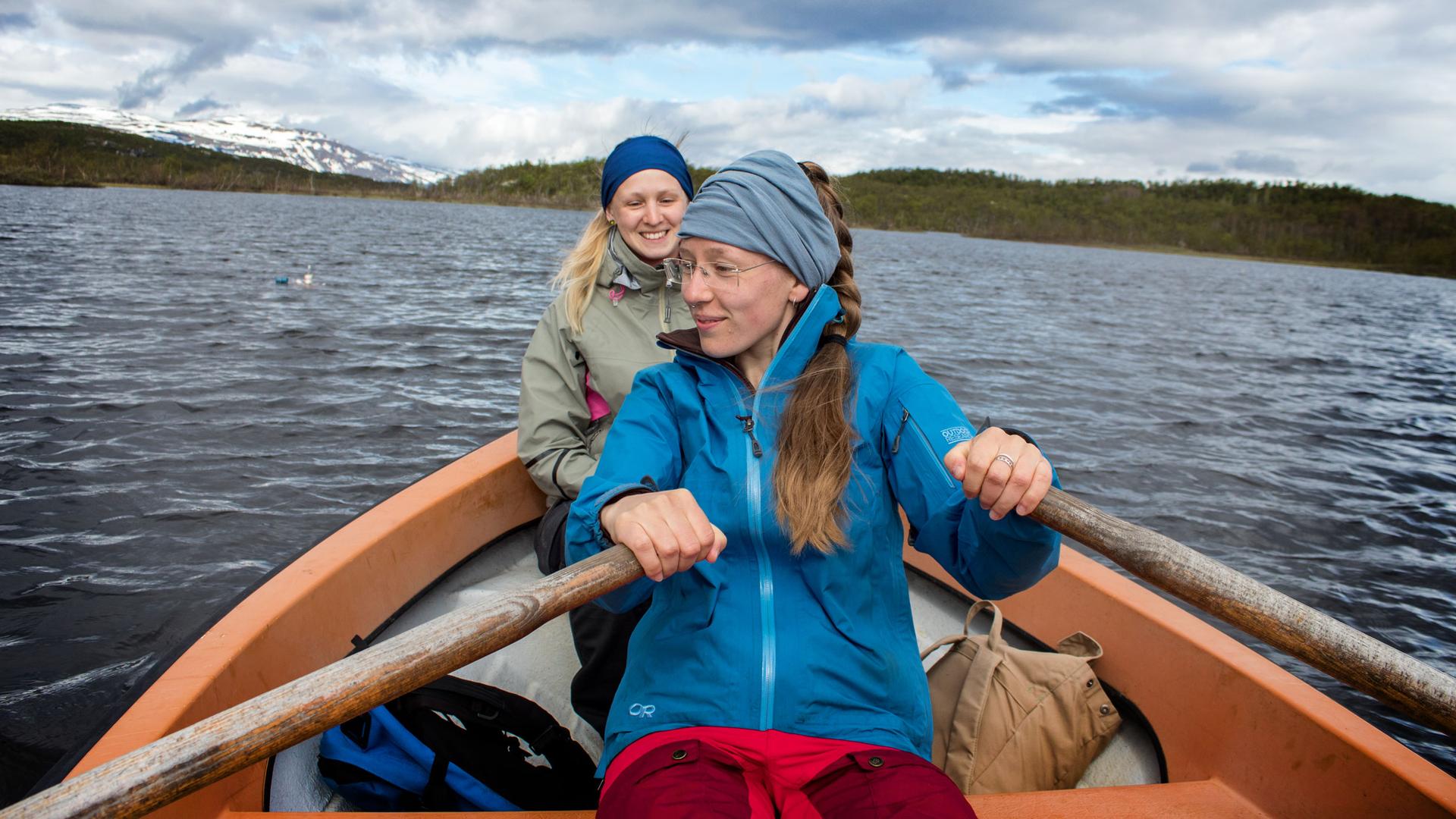
Not far from the lake, ecosystem ecologist Gesche Blume-Werry stabs the soil with a long steel rod called a permafrost probe to find out how much of the soil in this spot is frozen or not.
At first, the probe makes a sort of hollow sound as it pushes into the soft soil. About a foot down, though, it hits something that sounds like a big rock.
“This is frozen soil,” Blume-Werry says.
And in that soil, there’s all kinds of stuff — plants, dead animals and other organic material that Blume-Werry says was buried and frozen during the last ice age, roughly 11,000 years ago.
She pulls the probe back out and touches it. In just a few seconds, the end has become really cold — so cold that it’s uncomfortable to touch — just from brief contact with the permafrost less than a foot below.
Permafrost can be anywhere from a meter to a kilometer thick. It can be very cold or just barely frozen. But all around the Arctic, it’s starting to thaw.
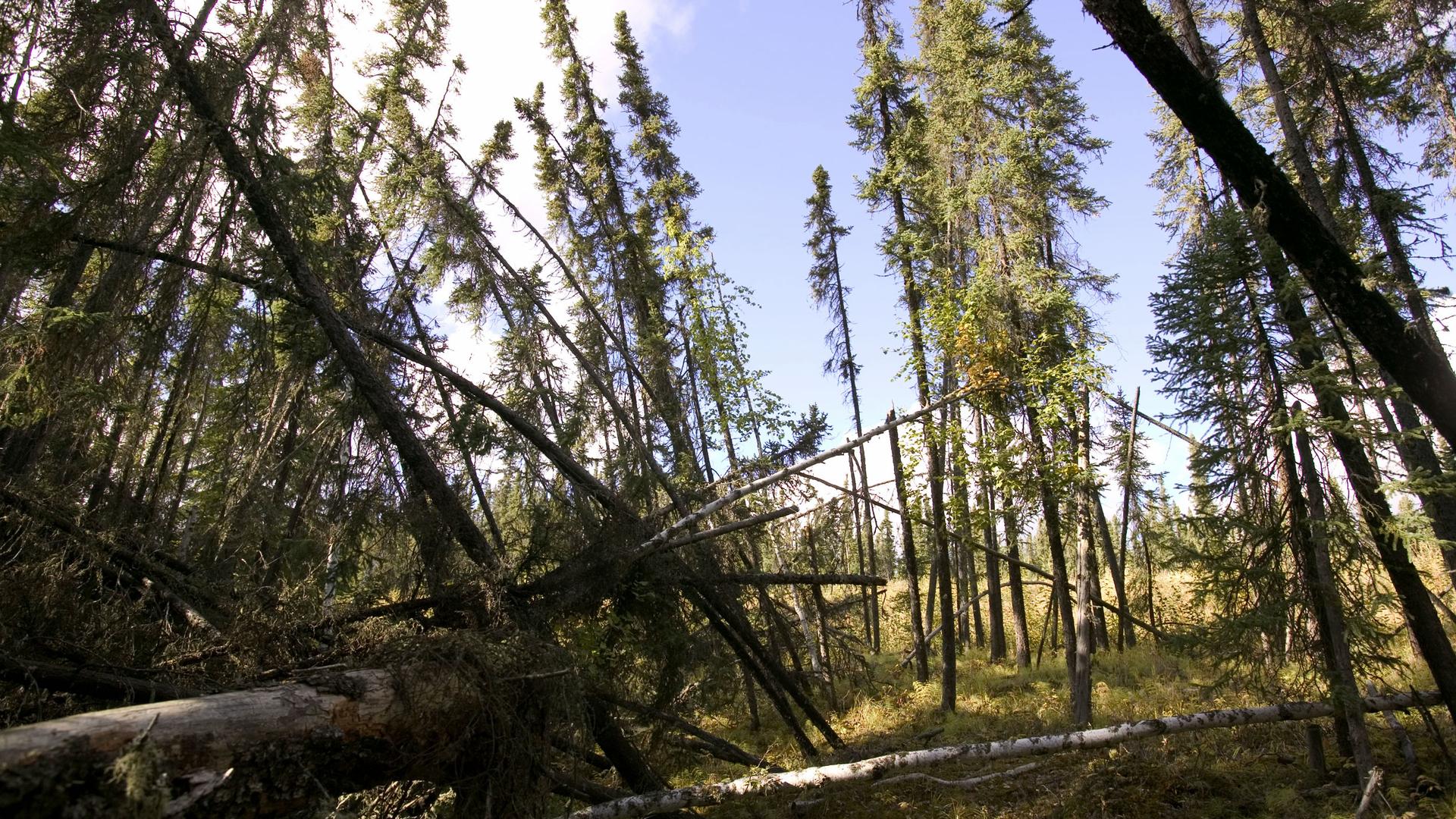
You might’ve seen some of the pictures of the local impacts of this transition from rock-hard to squishy soil — roads that are sinking and buckling, homes shifting and cracking, and trees tilting at awkward angles, giving rise to the label “drunken forests.” In fact, there’s a line of telephone poles next to the meadow where Blume-Werry is working, including one that also looks a little drunk.
“That is probably standing in an area where the permafrost is just disappearing now,” she says. “So they will have to redo that soon.”
These changes are a big deal for people who live in the Arctic. In many northern cultures, cellars dug into the permafrost have been a reliable way to store food for generations — nature’s freezer. Now, people can’t always trust that their food won’t spoil.
Thawing permafrost affects newer kinds of infrastructure too — buildings, water mains, sewage drains, even cemeteries. Communities are scrambling to adapt as the ground literally shifts beneath them.
But the impact is far more than local. All that organic material in the permafrost has a lot of carbon in it. That’s what “organic” means — organic chemistry is carbon chemistry. And for thousands of years — all of recorded human history and then some — that carbon has been locked up. Put in the freezer, you might say.
Now, Blume-Werry says, “we are unfortunately kind of taking the plug out of the freezer, and it’s starting to thaw.”
When that happens, all the frozen organic material in permafrost finally starts to decompose. Microbes spring into action and start chowing down on the remains of those plants and animals.
“Microbes are eating it,” Blume-Werry says. “And then they emit carbon.”
That’s how the carbon moves from the permafrost into the atmosphere. As the microbes begin breaking down the buried organic material, they transform its carbon molecules into gas — methane or carbon dioxide — which then float up into the atmosphere and help trap heat from the sun.
It is a long, slow process, but it’s starting to reactivate around the Arctic as the region rapidly warms up. These scientists are trying to help figure out how quickly it’s happening here, right now, and what might happen in the years ahead.
Back at the lake, Nyzell steers her rowboat close to an odd contraption floating in the water. It’s a big funnel, sitting upside down with a big syringe sticking up from the skinny end. If the thing looks homemade, Jansen says, that’s because it is.
“The way we make them float is by using pool noodles,” he says.
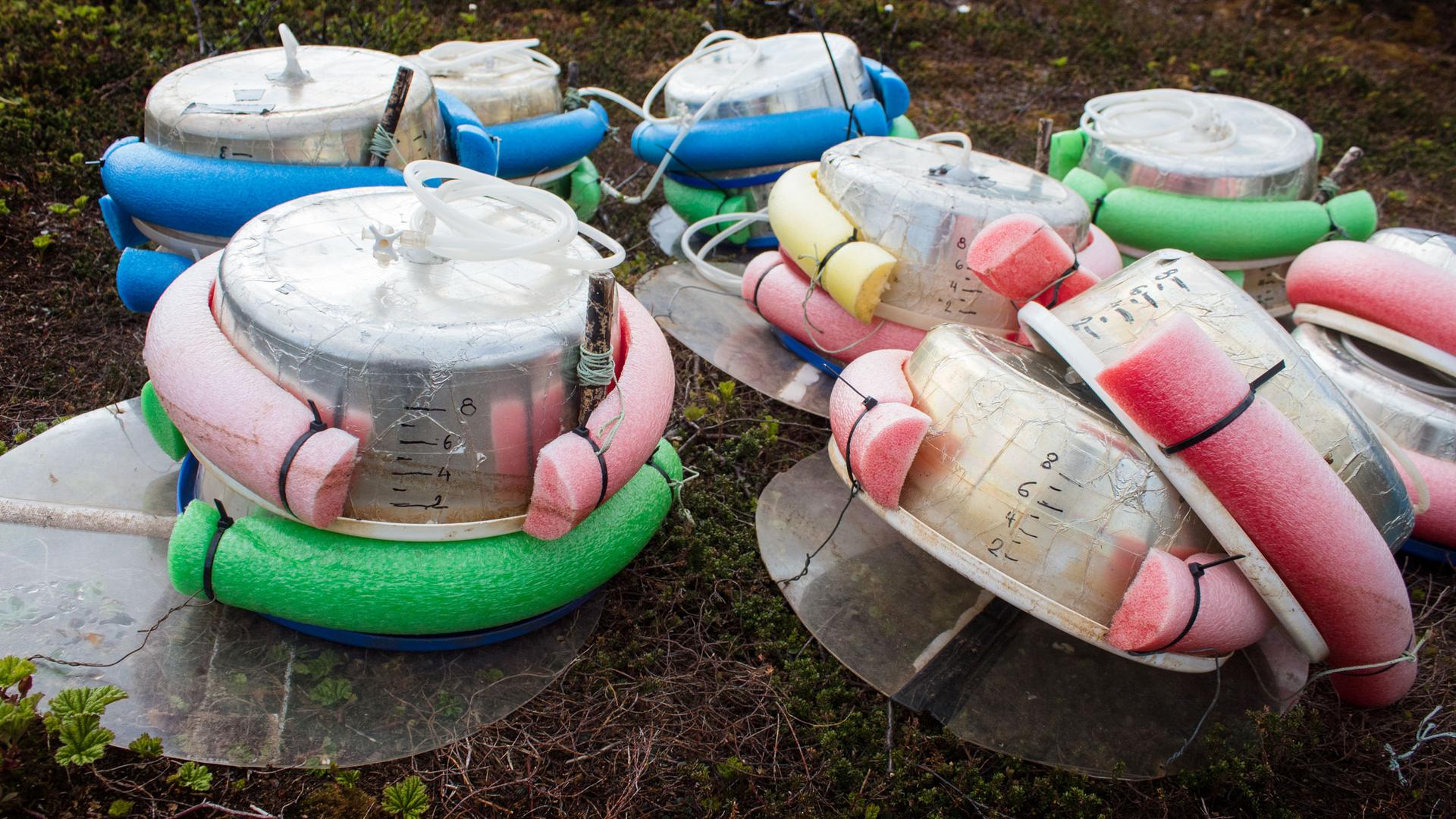
The contraptions are gas traps, designed to capture bubbles floating up from the lake bottom below. Nyzell rows up to one of them so Jansen can reach over the side of the boat and suck out the gas that’s accumulated in it with a syringe.
“We [have] about seven milliliters of gas, most of which will likely be methane,” he says.
Jansen’s team will measure the actual methane concentration of the sample later in the lab.
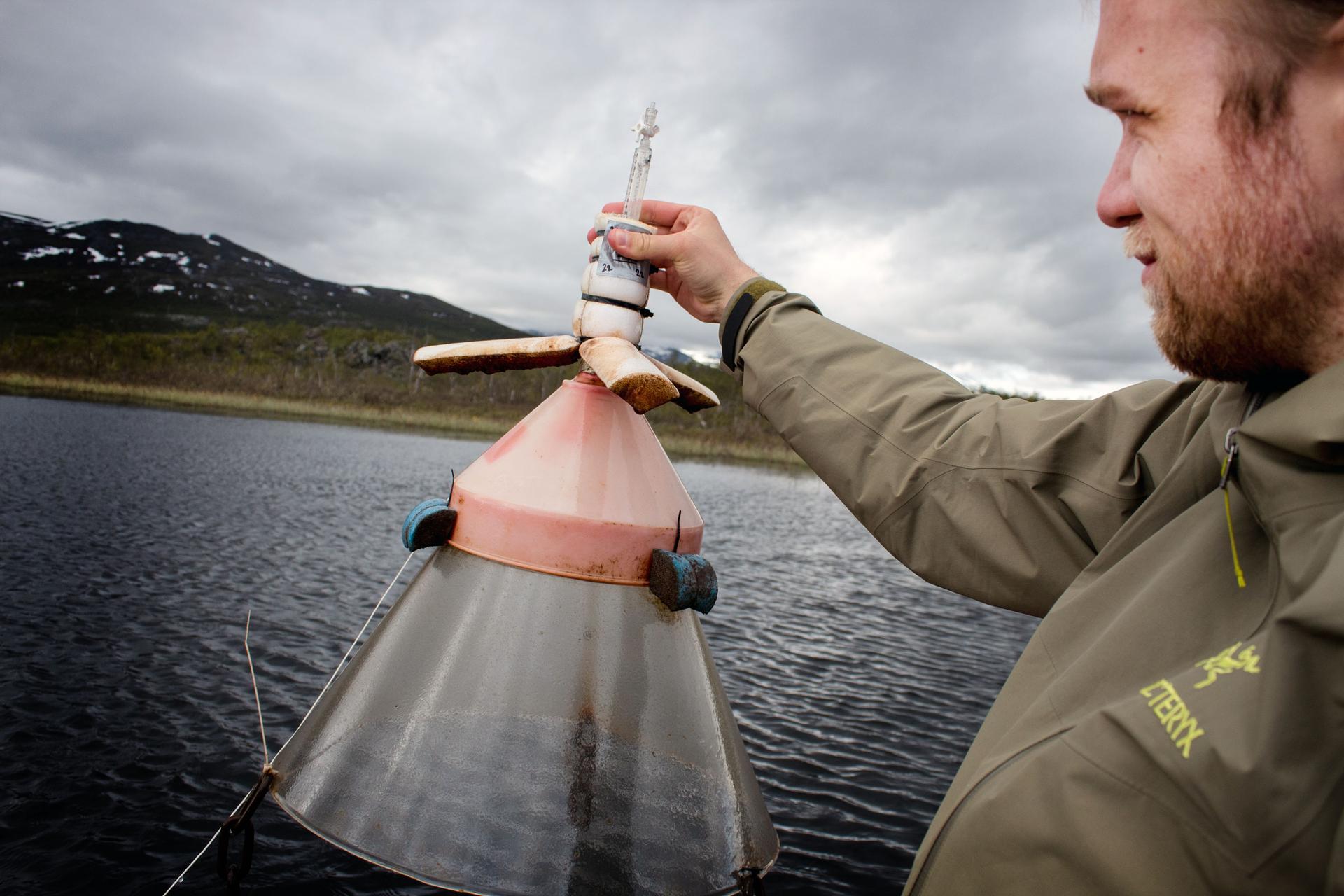
The team has placed 40 of these bubble traps on this lake, and a bunch more nearby, which they check multiple times a week, all summer long. That’s a lot of effort just to understand how much methane is coming off this one small area, this year, under very local weather and ecological conditions.
Groups of other scientists are at work elsewhere around the Arctic studying sites that are wetter or drier, colder or warmer, with more or less vegetation. They’re all trying to understand just how quickly the billions of tons of carbon locked up in all of the Arctic’s permafrost might be released.
It’s a massive challenge, but Jansen says it’s vital to understand what may happen to the Earth’s climate, with temperatures that could rise by as much as 4 degrees Celsius by the end of the century.
“The scary part is that we don’t know what an extra four degrees of warming will do to this huge amount of carbon that’s stored here in the permafrost,” Jansen says. “And we are trying to actively figure that out.”
The complexity of the Arctic system makes it hard to pin down the exact amount of greenhouse gas emissions coming from the soil here.
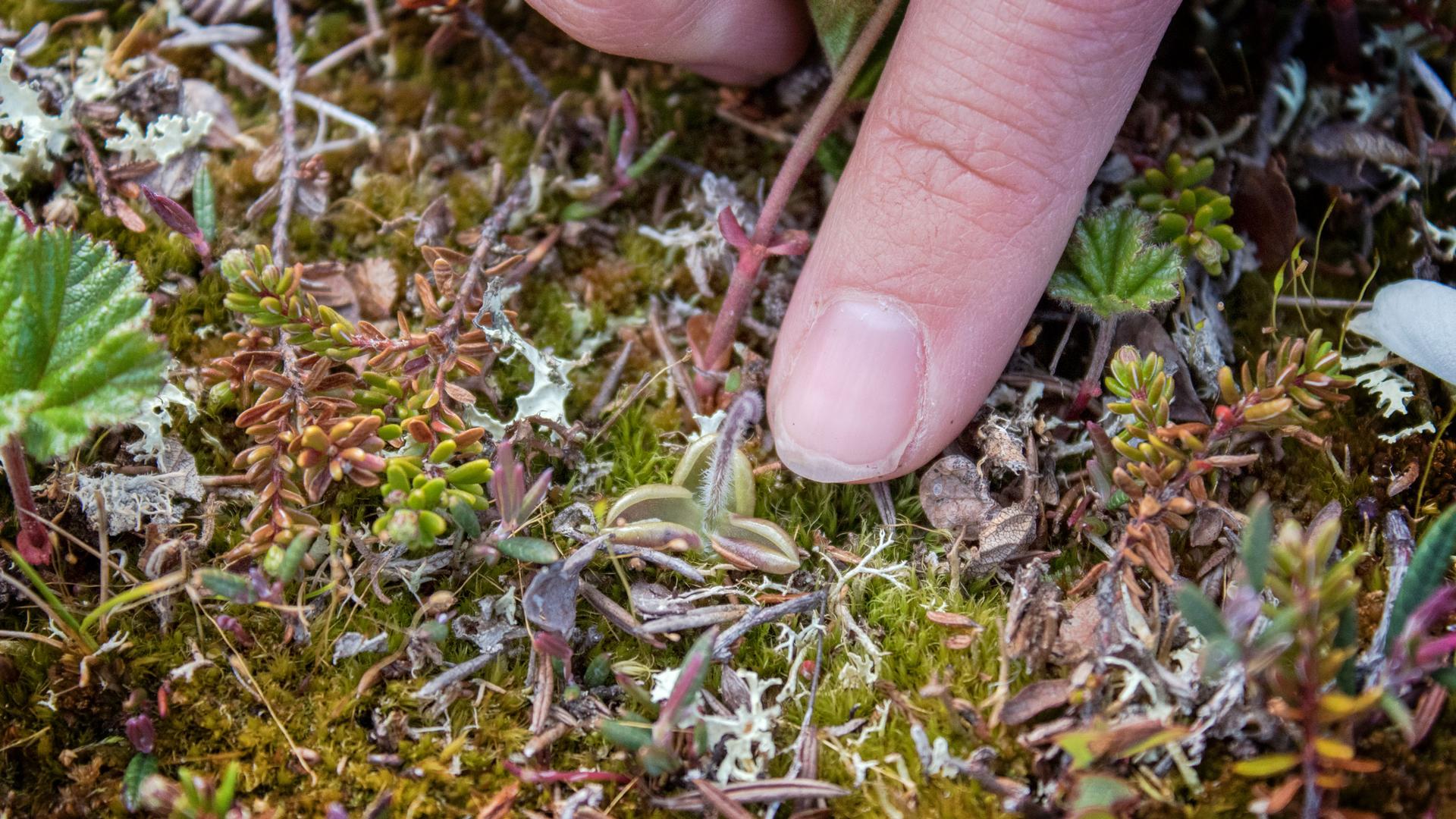
But Jansen says part of the difficulty is also because humans have never warmed the planet up like we are now, so we have nothing to compare it to. At least from the perspective of our species’ short history, we’re in what climate scientists call a “no analog” situation. A massive global experiment.
“There’s a knob that we turn on that big Arctic permafrost machine that we don’t know what it does,” Jansen says. “And until we actually figure out what it does, it may be a good idea to stop turning the knob.”
The worry is not just about that possible 4 Celsius warming, though. Just onedegree of warming, Blume-Werry says, can make “all the difference in the world.”
In many parts of the Arctic, she says, permafrost has already thawed enough to start emitting carbon. In other places, the frozen soil is right on the cusp of that pivot point, where a change of just one or two degrees can transform it from frozen to thawed, from something that stores carbon to something that emits it.
“And that is something that scientists are really worried about because there are many thresholds that you might cross there,” Blume-Werry says. “We might tip the scales of these really large exchanges, then we can have really dramatic consequences.”
That’s why protecting the Arctic is about more than saving the polar bear, Blume-Werry says.
“I think a lot of people — when they think about climate change — they’re like, yeah, you know some plants will disappear, and the polar bear, yeah, it’s cute,” she says. “But it’s also about us surviving as a species, because if it gets much warmer, the way that we have evolved, with our agriculture … the food we eat and where we live, it’s just not adapted [to a much warmer world].”
We don’t know how close we are to a massive release of carbon from frozen Arctic soils, but we do know that every bit of carbon humans emit into the atmosphere gets us closer to that point. The pollution from our vehicles, businesses, and power plants will cause more carbon to be emitted from thawing permafrost.
Scientists call it a positive feedback loop: More carbon in the air leads to more warming, which leads to the release of more carbon, and the process just builds on itself.
Another thing we know is that we don’t get a second chance at this. If our pollution triggers a huge release of carbon from Arctic soils, we’ve put ourselves at the mercy of processes we can’t control, and that will dramatically reshape the Earth’s climate and our own civilizations.
Still, despite the deep concern, project leader Jansen believes there’s time to dial things back.
“We have an ability to say stop, of course we do,” he says. “We have choices, especially in the Western world, in the rich world. We have choices, and therefore we have a responsibility.”
One way to act on that responsibility, Jansen says, is to try to better understand the massive experiment we’re conducting on the Arctic.
“That’s my part,” he says. “That’s what we do here. And the other part is acting on what we already know, which is [to] stop putting so much greenhouse gases in the atmosphere … I think we have a responsibility, and I think we can act. Absolutely.”
Amy Martin is the executive producer of the podcast and radio program Threshold.
